In ancient times the Romans conquered a particularly lucky and fertile region and called it just that: “Campania felix” eventually became just Campania. Earliest settlements of the region with its capital Naples dates back to the Osci in the 8th century BC with many rulers coming and going over the following centuries. Numerous fascinating sights, archaeological sites and nature parks collide with large metropolises and geologic disturbances due to volcanic and tectonic activities. Experience all facets of this fairly quaint yet so inspiring region from close up with the top 10 sights of Campania.
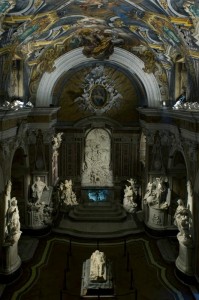
©Museo Cappella Sansevero
Cappella Sansevero in Naples
You absolutely have to visit the small baroque church in the heart of Naples’ historic city centre. Cappella Sansevero was originally built as a sepulchre for the di Sangro family and served as private chapel of Freemason Raimondo di Sangro, Prince of Sansevero. Many fascinating marble sculptures and Freemason symbols on the floors and works of art grace this church. Sanmartino’s “Veiled Christ”, Corradini’s “Chastity” and Queirolo’s “The Release from Deception” are among the church’s most glorious pieces of art. Don’t miss out on Salerno’s anatomical exhibits either.
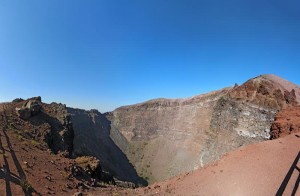
©Bigstock.com/Stephen B. Goodwin
Crater of Mount Vesuvius
Time and again, Campania has been afflicted by geologic and volcanic activities. One of the main catalysts is Mount Vesuvius located nine km from Naples. If you want to experience the 1,281 m high volcano from very close, you can hike the mountain on an approx. 1 km long footpath. Arriving at the crater, you get to observe the unique natural spectacle at close range. Constantly aware of the danger, visiting Mount Vesuvius even brings chills and thrills during volcanically inactive times. Numerous hiking trails lead you throughout the fascinating nature of the surrounding conservation area.
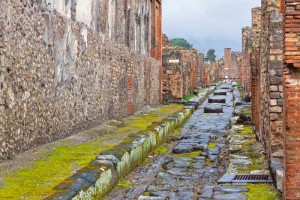
©Bigstock.com/katatonia82
Ancient Pompeii
When Mount Vesuvius erupted in 79 BC, the ancient city of Pompeii was buried and preserved. Nowadays, tours in many different languages lead through the excellently preserved city of ruins. Join a group and have an experienced guide show you the most important sites of Pompeii. Forum, capitol, theatre, basilica, temples, thermae and market squares are part of every tour. At the same time, you get fascinating insights into life in ancient Rome, when ancient history is brought back to life. Pompeii absolutely needs to be a part of your holiday in Campania.
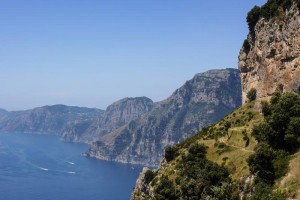
©Bigstock.com/mkallstrom
Path of the Gods
Take the car or bus to Agerola located approx. 500 m above sea level. One of the most beautiful hiking trails of the Amalfi Coast starts here. Sentiero degli Dei (“Path of the Gods”) leads you alongside secluded rock scenery above the sea for two hours. You need to be absolutely surefooted and best have a head for heights, because the path can become pretty narrow at times. However, there are hardly any challenging sections and the spectacular clear view across the entire Amalfi Coast truly is a well-deserved reward. Tip: Avoid the Path of the Gods in the summer months as it can get very hot here due to its exposed location.
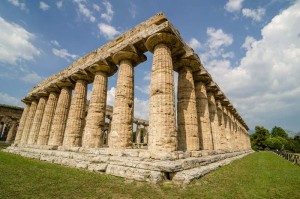
©Bigstock.com/GeaMedia
The Greek temples of Paestum
Campania’s coastal strip attracted many nations and settlers, such as the Greeks, who once set up a colony of a colony (a so-called “apoikia”) in Paestum located 2 km inland. To this day you can visit many of the ruins of erstwhile Greek settlements including the Temple of Hera, the Temple of Poseidon and the Temple of Athena with unusual traces of Doric architectural style. The museum holds numerous finds from the surroundings of Paestum, mostly grave finds from necropolises.
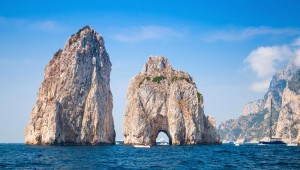
©Bigstock.com/Eugene Sergeev
Capri’s faraglioni
Capri’s landmarks are of stony nature. Four imposing rocks, the so-called faraglioni, rise outside the south-eastern coast in the Gulf of Naples. Three of them form a small rock chain. They are 81 to 109 m high and are situated fairly close to the land. A smaller fourth faraglione (“Scoglio del Monacone” – “The Hermit’s Cliff”) can be found about 200 m eastwards. The rare lizard species Lucertola Azzura (“Blue-tinted lizard”) is endemic to these rocks. It adapts itself to the colour of the rock due to its blue pigmentation thereby skilfully disguising itself from its predators.
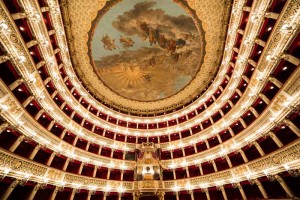
©Bigstock.com/isogood
Teatro di San Carlo in Naples
Teatro di San Carlo used to be the most prestigious opera in all of Europe, even ahead of Milan’s La Scala. The Bourbon King Charles VII of Naples had it commissioned in 1735 in the place of the dilapidated Teatro San Bartolomeo. A severe fire destroyed a large part of the opera in 1817, but performances resumed only a few months later after restorations. Merely entering the Teatro lets chills run down your spine. The voices of the world’s most famous singers echo throughout the monumental rooms and the high, abundant interior.
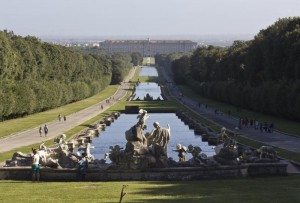
©Bigstock.com/greta6
Palace of Caserta
When Charles VII became ruler of the Kingdoms of Naples and Sicily, he had himself built an ostentatious palace in Caserta approx. 40 km north of Naples. Over 1,200 rooms and 1,970 windows furnish the huge Palazzo Reale modelled after the Palace of Versailles. Luxuriously furnished rooms and breath-takingly beautiful works of art accompanied by enormous pillars and the incredibly long grand marble staircase are waiting for you inside the palace. You also need to visit the tremendous gardens, as there’s always something discover on over 100 ha of park grounds.
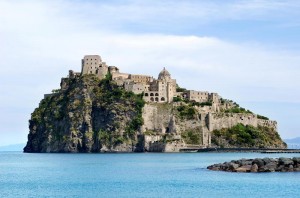
©Bigstock.com/artconcept
Aragonese Castle on Ischia
Predating constructions of the castle resting of the volcanic island of Ischia can be traced back to 474 BC. The Aragonese Castle only took today’s form because of the Aragonse. Alfonos I of Naples had this imposing structure built in the mid-15th century. The castle rises high above the steep rocky coast and is connected to Borgo di Celsa by a 200 m long stone bridge. Grand clear view across the wide sea aside, numerous cathedrals, churches and the dark dungeon are waiting for you. Castello Aragonese virtually glows at night.
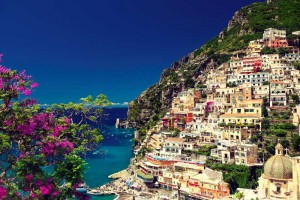
©Bigstock.com/EdwardDe
Amalfi Coast
The Amalfi Coast was declared World Heritage Site by the UNESCO in 1997, and with good reason. Some of Italy’s most beautiful villages and towns are located along the coastal road SS 163 Amalfitana. What all of these places have in common is the grand view of the sea and the surrounding nature. Talking about nature, the Amalfi Coast is perfect for hikes, bike tours and walks in the fresh air. Be enchanted by the lush Mediterranean vegetation and find your very own place of power.
The top 10 sights of Campania offer something for everyone between green coastal strips, ancient excavation sites, wide hiking trails and impressive buildings with long history. If you want to see even more of Italy, click through the travel suggestions by ZAINOO!